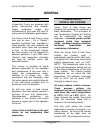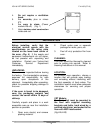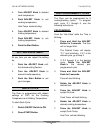
VCH & VRT SERIES OVENS F-41162 (07-10)
3
GENERAL
INTRODUCTION
Vulcan-Hart Ovens are produced with
quality workmanship and material.
Proper installation, usage, and
maintenance of your oven will result in
many years of satisfactory performance.
The Vulcan Cook & Hold Oven is more
than just an oven – it’s a “System”;
precisely controlled heat, regulated to
retain ascorbic acid and maximize the
nutritional value, taste and eye-appeal
of food. In this environment, virtually
any food product can be prepared to
delicious perfection in just ONE oven!
“System” food preparation eliminates
the need for multiple ovens with
duplicate features.
This manual is provided to assist
persons responsible for the operation
and maintenance of the oven with a
simple, but comprehensive under-
standing of its proper use. We
recommend that you thoroughly read
this entire manual and carefully follow all
of the instructions provided prior to
placing the oven into operation.
As with any piece of food service
equipment, this oven system requires a
minimum of care and maintenance.
Recommended procedures are
contained in this manual and should
become a regular part of the operation
of the unit.
Vulcan Cook & Hold Oven is the right
choice for low temperature food
preparation.
PRINCIPLES OF
COOK & HOLD OVENS
Vulcan Cook & Hold Ovens are
designed and perfected for cooking at a
lower temperature. The principles of
Low Temperature Cooking and Holding
can be summarized into several
objectives: increased product yields,
increased profits from increased
yields, increased moisture retention,
increased tenderization, and
consistency of doneness.
When the Vulcan Cook & Hold Oven
finishes the cooking cycle, it
automatically switches to the hold cycle.
Throughout this manual we recommend
holding temperatures such as 140⁰F
(60⁰C). This temperature refers to the
oven’s hold temperature setting and not
to the internal temperature of the food
being roasted. The internal product
temperature will run below the hold
temperature. (For example: roast beef
held at 140⁰F will be about 130⁰F
internally or medium rare.)
All meat products contain enzymes.
These enzymes perform the
important function of tenderizing the
meat when they reach temperatures
of 100⁰F (38⁰C) to 140⁰F (60⁰C). As
these enzymes are heated, they break
down the connective tissue that is
inherent in all red meat products.
The hold cycle allows this natural
tenderization process to proceed in an
orderly manner. As long as the internal
temperature of the meat does not
exceed 140⁰F, the process will continue.


















